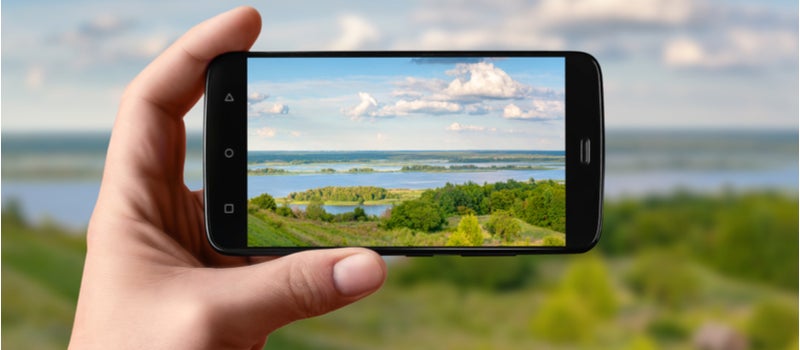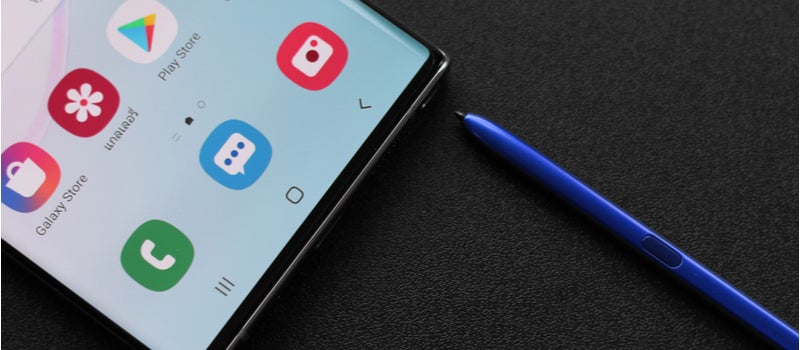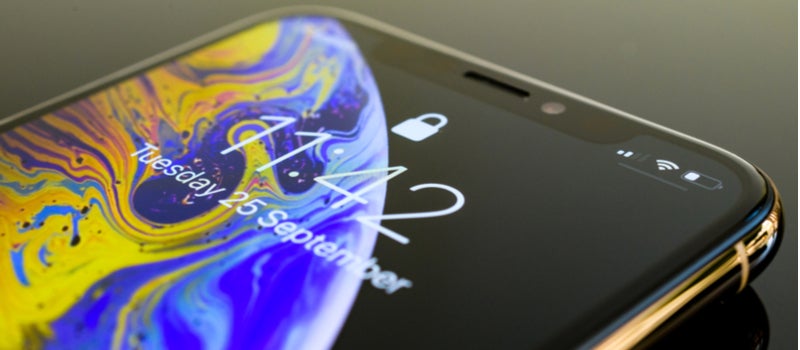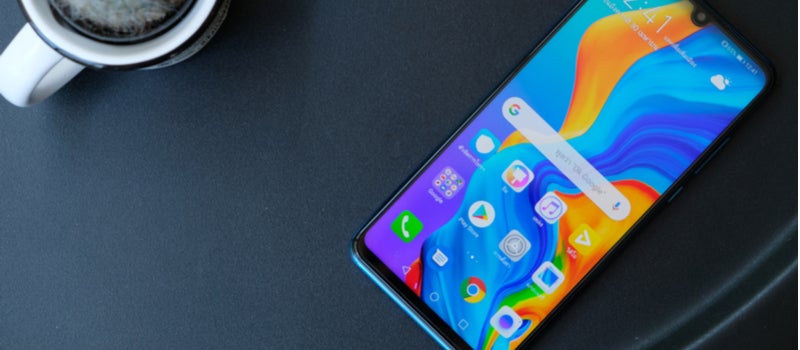There’s no shortage of options at the premium end of the smartphone market, with a number of manufacturers – including Samsung, Apple and Huawei – releasing new and improved devices over the course of each year, replete with an ever-increasing array of features.
Of course, premium smartphones also come with a premium-size price-tag attached, and consumers can expect to be set back in the range of $1,000-plus when making a purchase outright, or alternatively may look at a monthly plan with a telecommunications provider.
If considering a monthly plan, it is certainly worthwhile taking into account what the total cost will be over the course of a contract – along with the contract conditions, and the talk, text and data allowances and any other inclusions – and assessing how this compares to making an outright purchase.
For most consumers purchasing a premium smartphone will represent a significant investment, and it is important to weigh up both the costs involved and the different features on offer in determining which model will deliver the most value.

Large displays, sophisticated cameras and plenty of power
Sporting the latest and greatest in mobile technology, premium smartphones pack a lot into a comparatively small form factor, and there are many separate elements that consumers should take into account.
Displays are one of the headline features of premium smartphones, which tend to be at the larger end of the smartphone size scale, with manufacturers regularly bringing new devices to market sporting increasingly immersive and sophisticated display specs.
Cameras are also a feature that attract a lot of attention, with premium smartphones kitted out with the latest in mobile camera hardware and commonly featuring three or more different cameras (front and rear), complemented by photo and video software.
Meanwhile, consumers should also keep in mind what sort of power premium devices are packing, with top-of-the-line processors required to carry out the sophisticated array of functions these smartphones provide users, along with battery capacity.

Samsung Galaxy Note10 and Note10+
The Galaxy Note10 and Note10+ are the latest additions to Samsung’s Note series, complemented by an enhanced S Pen stylus which provides additional functionality and control.
The Galaxy Note10 series runs the Android 9 Pie operating system, and features:
- Display – the Note10 (6.3 inches) and Note10+ (6.8 inches) sport an edge-to-edge Infinity-O Display, with an in-display cut-out for the front camera, which Samsung describes as “small and centred for a balanced design”.
The Note10 features an FHD+ Dynamic AMOLED 2,280 x 1,080 (401 ppi) display, and the Note10+ a Quad HD+ Dynamic AMOLED 3,040 x 1,440 (498 ppi) display, with both models HDR10+ certified.
- Design – Samsung describes every element of the Note10 series as being “crafted to be sleek, slim and distraction-free”, with the series also sporting an in-display ultrasonic fingerprint sensor, and featuring an IP68 rating for water and dust resistance.
The Note10 measures in at 71.8 x 151 x 7.9 mm and weighs 168 g, with the Note10+ measuring in at 77.2 x 162.3 x 7.9 mm and weighing 196 g.
- Camera – the Note10 features a rear triple camera (16 MP ultra-wide, 12 MP wide-angle and 12 MP telephoto), with the Note10+ featuring a rear quad camera (16 MP ultra-wide, 12 MP wide-angle, 12 MP telephoto and VGA DepthVision), with both models also equipped with a front 10 MP camera.
The Note10 series comes with a number of photo and video software features, such as AR Doodle, with users able to use the S Pen to incorporate image-tracking dynamic drawings, effects and animations.
- Under the hood – the Note10 series is powered by a 7nm 64-bit octa-core processor, with the Note10 equipped with 8 GB RAM and the Note10+ 12 GB RAM. The Note10 comes with 256 GB internal storage and the Note10+ a choice of either 256 or 512 GB internal storage.
The Note10 is equipped with a 3,500 mAh battery and the Note10+ a 4,300 mAh battery, with the series featuring Super-Fast Charging, delivering 25 W of power, and Fast Wireless Charging 2.0.
The Samsung website lists the Note10 as priced from $1,699 and the Note10+ from $1,899, available in a choice of aura glow or aura black.

Apple iPhone XS and iPhone XS Max
Apple’s iPhone XS and iPhone XS Max have been on the market for a bit under a year now, offering consumers the choice of two form factors.
The iPhone XS series runs Apple’s iOS 12 operating system, and features:
- Display – the iPhone XS (5.8 inches) and XS Max (6.5 inches) sport an all-screen Super Retina OLED display, supporting Dolby Vision and HDR10, with Apple’s Face ID facial authentication system allowing users to unlock the phone and log into apps and accounts.
The iPhone XS features 2,436 x 1,125 resolution (458 ppi) and the iPhone XS Max 2,688 x 1,242 (458 ppi) resolution.
- Design – Apple states that the front and back glass design of the iPhone XS series “features the most durable glass ever in a smartphone with improved scratch resistance”, with the glass back enabling faster wireless charging, with both models featuring an IP68 water and dust resistance rating.
The iPhone XS measures in at 70.9 x 143.6 x 7.7 mm and weighs 177 g, with the iPhone XS Max measuring in at 77.4 x 157.5 x 7.7 mm and weighing 208 g.
- Camera – the iPhone XS series features a dual 12 MP wide-angle and telephoto rear camera system, with dual optical image stabilisation with 2x optical zoom, and digital zoom at up to 10x, along with a 7 MP TrueDepth front camera.
Apple states that the dual camera system’s larger, deeper pixels improve image fidelity, along with low-light performance, and with a faster sensor enable improved video stabilisation and extended dynamic range for more highlight and shadow detail in video modes up to 30 fps.
- Under the hood – the iPhone XS series runs a 7nm A12 Bionic chip with a six-core fusion architecture, with a neural engine built for advanced machine learning across a range of applications, and comes with a choice of 64, 256 or 512 GB internal storage.
Apple advises that the iPhone XS battery delivers wireless talk time of up to 20 hours and up to 12 hours internet use, and the iPhone XS Max wireless talk time of up to 25 hours and up to 13 hours internet use, with fast-charging for both models delivering up to a 50 per cent charge in 30 minutes.
The Apple website lists the iPhone XS as priced from $1,899 for the 64 GB model and the iPhone XS Max from $2,099 for the 64 GB model, available in a choice of silver, space grey or gold.

Huawei P30 and P30 Pro
Huawei unveiled the P30 and P30 Pro in March this year – and, as with the Note10 series and iPhone XS series, offers consumers the choice of two form factors.
The P30 series runs EMUI 9.1, based on the Android 9 Pie operating system, and features:
- Display – the P30 (6.1 inches) and P30 Pro (6.47 inches) sport an OLED FHD+ (2,340 x 1,080) dewdrop display with a small notch, with the near bezel-less front glass sporting an in-screen fingerprint sensor.
- Design – Huawei states that both the P30 and P30 Pro can comfortably be held with one hand, with the series’ design “inspired by the unique colour palette and pristine look of salt flats”, with the P30 featuring an IP53 and the P30 Pro an IP68 water and dust resistance rating.
The P30 measures in at 71.36 x 149.1 x 7.57 mm and weighs approximately 165 g, with the P30 Pro measuring 73.4 x 158 x 8.41 mm and weighing approximately 192 g.
- Camera – the P30 is decked out with a rear Leica triple camera (40 MP wide-angle, 16 MP ultra-wide-angle and 8 MP telephoto), with the P30 Pro sporting a rear Leica quad camera (40 MP wide-angle, 20 MP ultra-wide-angle, 8 MP telephoto and time-of-flight), with both the P30 and P30 Pro also sporting a 32 MP front camera.
The P30 is equipped with 5x hybrid zoom and up to 30x digital zoom, with the P30 Pro featuring 10x hybrid zoom and up to 50x digital zoom.
- Under the hood – the P30 series is powered by a 7nm Kirin 980 octa-core processor, with the P30 equipped with 6 GB RAM and 128 GB internal storage, and the P30 Pro 8 GB RAM and 256 GB internal storage.
The P30 sports a 3,650 mAh battery and the P30 Pro a 4,200 mAh battery, with the P30 Pro supporting wireless charging and featuring 40 W SuperCharge, which Huawei advises charges a device from 0 to 70 per cent in 30 minutes.
The P30 series is available in breathing crystal, aurora and black, with the Huawei website linking to a number of local retailers, with prices in the range of $1,099 for the P30 and $1,499 for the P30 Pro.
Image credits: Oleksiichik/Shutterstock.com, Framesira/Shutterstock.com, Hadrian/Shutterstock.com, Karlis Dambrans/Shutterstock.com


Share this article